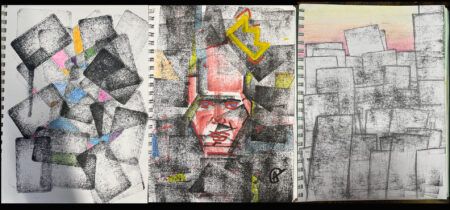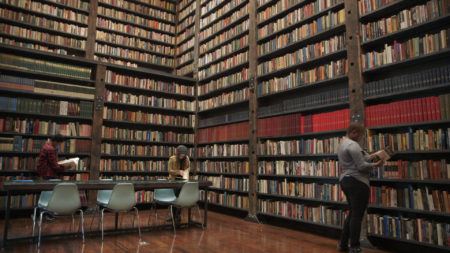Teaching with Contemporary Art
Seek Out and Say “Yes”
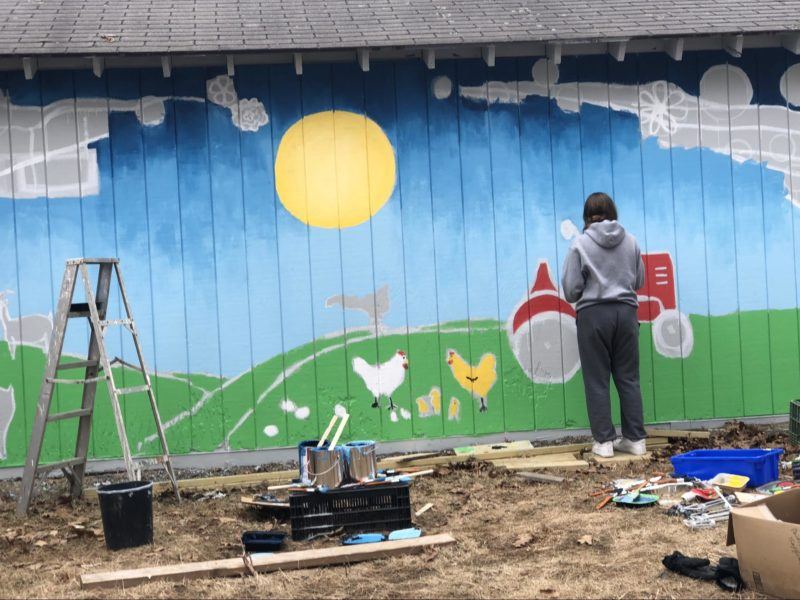
Photo courtesy Tracie Dunn
Teaching art is the center of my professional life, and I adore working alongside students and colleagues who approach learning as a creative endeavor. Yet, many years ago, an offhand comment from a respected painting professor almost made me reconsider a possible career in education. When I was about to graduate with a fine-arts degree, to try becoming a teacher, he said I was “too conscientious” to be an artist. He was right in that I was definitely a conscientious person. While I was growing up, my strict, hard-working parents were intolerant of decisions that seemed unnecessarily selfish and of behaviors that did not take into account the feelings and wellbeing of others. I was raised to be civic-minded and economically prudent. Until hearing that professor’s opinion, I had cultivated these qualities, never thinking they were at odds with being creative or would somehow prevent me from living an artistic life. So, I was hurt and confused by his comment. Did he mean he thought my decision to become an art teacher was a sign of being too conscientious to also be an artist? I concluded he just did not understand my world. After all, two years earlier, he said that my work was strong but that my morning shifts at a local coffee shop were getting in the way of building my portfolio. But how else would I pay for art supplies, rent, and food? Still, his words had gotten into my head, and it was not a good moment to change course: I had already submitted more than one hundred applications for art-teacher jobs. So, I pushed his comment aside and secured my first position as a full-time art teacher at a public high school.
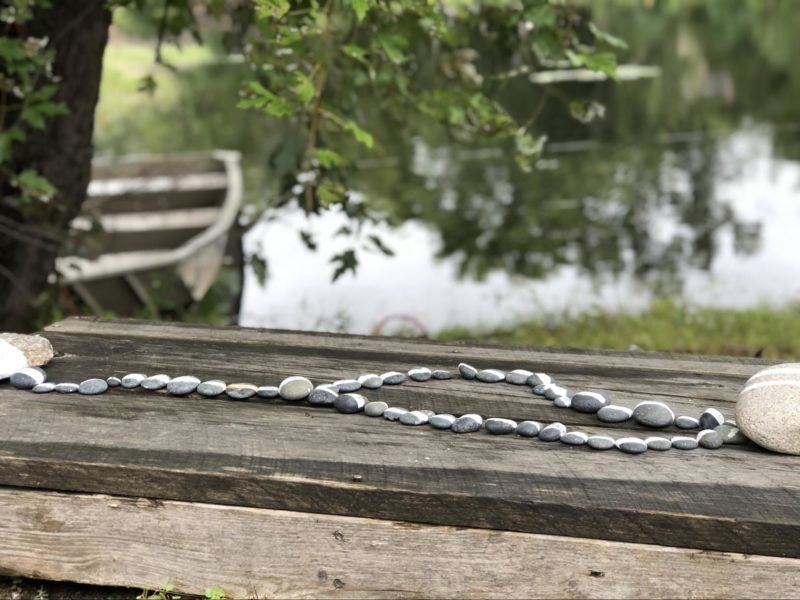
Photo courtesy Tracie Dunn
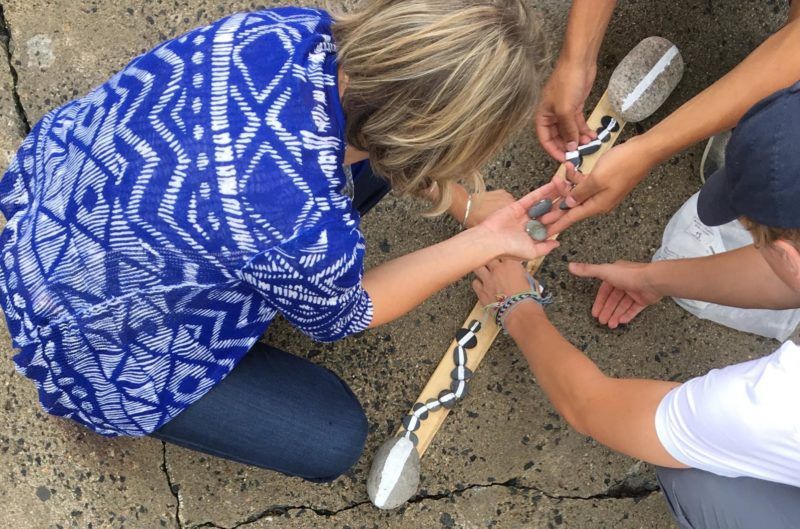
Photo courtesy Tracie Dunn
That first year of teaching led to many more, and seventeen years later, I remain committed to the work and emboldened by its creative potential. For too long, however, that former professor’s judgment haunted me. Whenever I had to make a big life decision that felt right or responsible, I would wonder if I was compromising my claim as a creative person, as if being responsible was somehow incompatible from being a successful artist. It took graduate studies, meeting art activists, and years of personal experience for me to finally feel that I could self-identify as both a conscientious person and an artist. Phew! Separating the two identities was not satisfying for me. Moreover, I was learning how to acknowledge but not overly value another person’s opinion, which is a challenging and important skill for a conscientious person to acquire.
One artist who helped me grow more confident as a conscientious creator was Andrea Zittel. In 2001, I saw an Art21 video segment on her work and immediately felt connected to her vision. I admired how seamlessly and intentionally she integrated her personal and artistic lives, how she continuously examined her life as a series of opportunities for heightened beauty and functionality. In a sense, she was shamelessly hyper-conscientious, as she measured and scaled her life into deliberate portions and compartments of creativity. Since then, I have been similarly influenced by other artists featured by Art21, like Maya Lin, Wolfgang Laib, and Mary Mattingly. I appreciate the great care these artists take in celebrating the interconnectedness between one person, other people, and their shared environment. Their artworks seem to say, “With connection comes responsibility.”
So I found myself climbing the ranks of being a teacher—from novice to seasoned to veteran instructor—without noticing the years passing, all the while viewing myself as equal parts educator, collaborator, and artist. This approach allowed me to feel the wholeness of my skills and capacities, and it proved especially effective when, in 2012, I launched “Rivers and Revolutions,” an interdisciplinary program at a public high school. For the next seven years, I worked tirelessly to establish the program and create its curriculum, which introduced outdoor and art education alongside academic subjects such as English, Social Studies, Math, and Science. In this role, my passions for the outdoors and for contemporary art co-evolved and found unexpected spaces and forms of expression, such as creative acts of stewardship. For one such project, my fellow teachers, my students, and I painted a mural and built picnic tables for a local family-owned farm. Everyone involved felt the magic of collaborative, hands-on, creative, outdoor education. I will forever cherish the integrated curriculum we created and taught, which celebrated the interconnectedness of learning and living. It was a conscientious art teacher’s dream, come true!
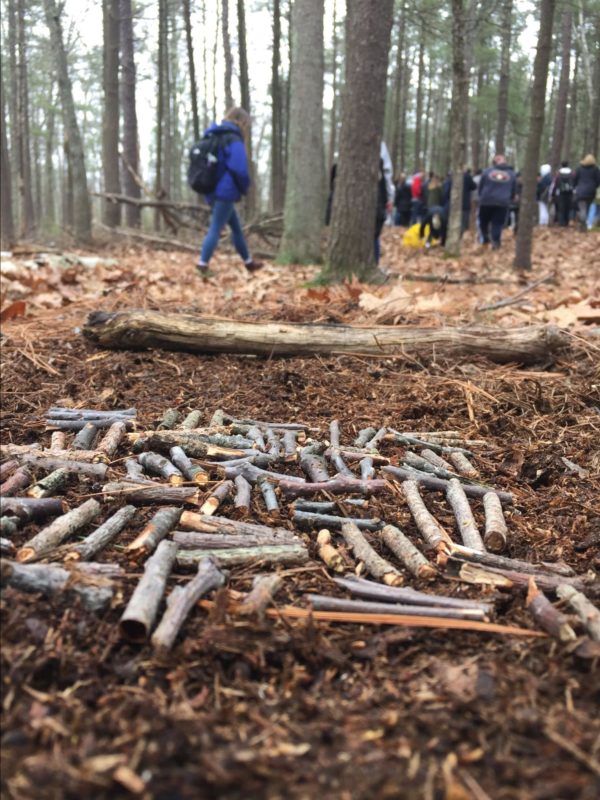
Photo courtesy Tracie Dunn
In addition to being conscientious, resiliency is a central quality to both my teaching and art practices. Social-emotional learning (SEL) has become more important, and resiliency is often cited as one of the main skills to foster in students. As a person who is a teacher, an artist, and a mother, I confess that I have tried new approaches, taken risks, and made mistakes, sometimes really big ones. When I fail, I suffer the consequences and endure the subsequent disappointment and sorrow. But like many artists, I have trained myself to get back up, learn from the situation, try again, and do better. Resiliency has delivered me confidence and made it possible for me to face a number of opportunities and challenges that would paralyze me if I were a perfectionist. It has taken many years of successes and failures, and countless inconclusive efforts, for me to truly enjoy and feel at ease with the process, regardless of outcomes.

Photo courtesy Tracie Dunn
I have come to value the process of pursuing a goal as a work of art itself, rather than as a means to an end. Andrea Zittel speaks to a similar realization when she describes creating A-Z Comfort Units in 1994. She says that in developing these living units, she hoped they would somehow “solve all of her problems.” Yet once they were complete, to her surprise, she felt despondent and depressed, not because they were a failure but because she had lost the hopeful feelings that accompanied the process of making them. One of her current efforts includes a community-based work of art with no determined end point, Wagon Station Encampment. This ongoing social experiment pursues what it means to live and be alive. It is a work of art that balances control and freedom in equal measure. Zittel oversees many variables within the community, but her strong influence is offset by the vast desert landscape, the anticipation that the community will outlive her, and the multitude of outcomes inherent in hosting hundreds of young artists. To me, Zittel is a teacher. She has intentionally set up a situation, composed of dwellings and communal spaces that are designed to inform and allow aspiring artists to grow and develop their practices under her guidance and alongside one another. This work has inspired me to envision all kinds of possibilities in the classroom, to resist the urge to focus on performance-based outcomes, and to insist that the process of learning is our main purpose.
Being conscientious helps me to decide which opportunities to pursue, and being resilient helps me feel confident that the process is valuable for itself. Whether I am mixing paints and swinging hammers alongside students, taking up beekeeping with my son, or (in my most recent role) being a caretaker for a historically significant home, all of these responsibilities are sources of novelty, joy, and growth. And when I teach, I aim to help students to reach a similar point in their artistic and life pursuits. First, I want them to seek and say “yes” to challenges that will not only stretch their skill development but also feel like a good fit for who they are and who they want to become. Then, I want them, without the stigma of failure, to confidently delve into the work, trusting that the process will grow and reward them. Lastly, I want them to enjoy the experience enough to complete it, reflect on it, and look for the next one.
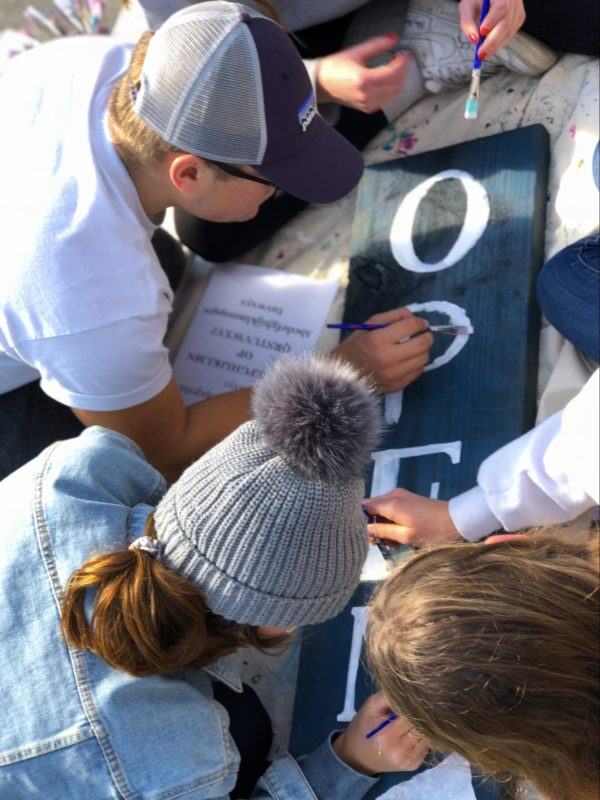
Photo courtesy Tracie Dunn

